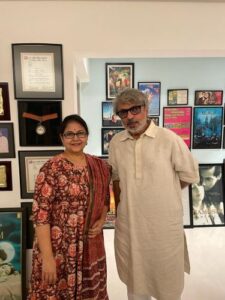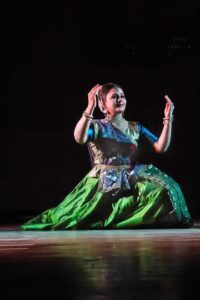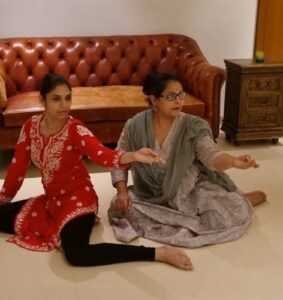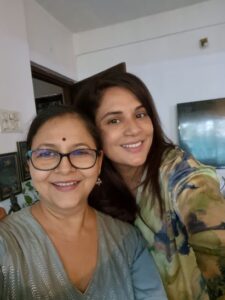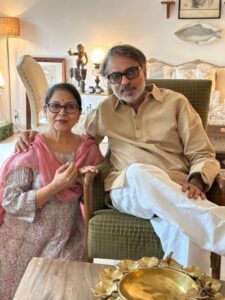‘Doing Heeramandi was an incredible experience’
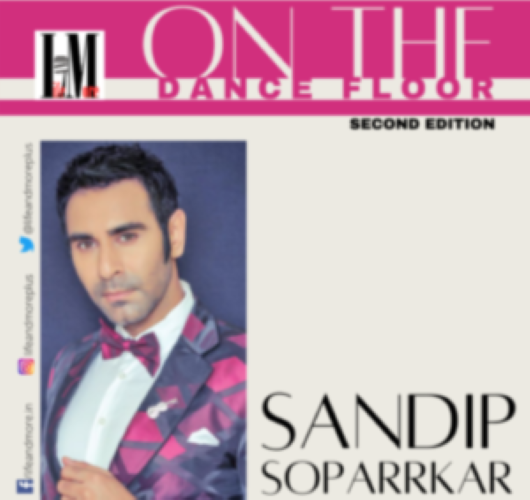
A distinguished Kathak dancer and disciple of Pandit Birju Maharaj, Guru Vijayshree Chaudhary is the choreographer behind the hit Netflix series Heeramandi directed by Sanjay Leela Bhansali. Awarded the Hirkani Award, she is renowned for her artistry, dedication to preserving classical dance, and her ability to bring traditional forms to life in modern mediums. Talking to her about her experience of working on this project was a delight, excerpts from the interview:
How was it working on Heeramandi?
The experience was incredible. While I was really looking forward to it, there was also some pressure because my guru had previously worked with Sir and created two of the most iconic numbers in the history of Hindi cinema — Kahe Ched Ched and Mohe Rang Do Laal. It’s difficult to meet those standards, but Sir was very supportive. He would correct me affectionately, which gave my creativity a clear direction. Sir had initially called me for a padhant in one of the songs filmed on Richa Chadha. We bonded during that, and later, he invited me for Sakal Ban. His assistant reached out to me and asked me to come to the set. When you work with a genius like him, the learning is immense. He is extremely particular about the minutest of details.
Mr. Bhansali is known to be a hard taskmaster. How did you find your way?
Honestly, I am in awe of his work. He has an unparalleled understanding of what he does—of music, dance, and the grandeur of cinema. So, all I did was offer myself completely to bring his vision to life. With the blessings of my guru, I tried my best to do justice to it.
How was it training the artists of the film?
It was wonderful working with them all. Manisha Ji, despite being such a senior actor, would arrive early on set and rehearse. She would take me aside to understand the nuances of the steps! It’s inspiring to work with such professional and dedicated actors. Richa is an incredible actor, but not many know that she is also a trained dancer. I remember one specific close-up where all she had to do was raise her eyes. She discussed it with me beforehand, and when the shot was done, Sanjay Sir exclaimed, Kya baat hai! It made my heart swell with pride. Sanjeeda and Aditi are also trained dancers, so it was very collaborative working with them.
You even did a Padhant in Sakal Ban song. How did that come about?
Actually, the opportunity to do the padhant for Sakal Ban came about quite unexpectedly. Initially, Sanjay Leela Bhansali Sir had called me in for another song, where I shared some suggestions. However, those ideas didn’t exactly align with what he was envisioning at that moment. Then, one day, out of the blue, I got another call from him while I was at home. I went over and performed a padhant for a new song he was working on. Suddenly, it was like a spark went off for him! He instantly knew this padhant would work, and right there, he decided I should record it. And that’s how I ended up doing the padhant for Sakal Ban—an experience I truly cherish.
What has been the most memorable moment of the shoot?
The most memorable moment of the shoot was honestly the entire experience of working with Sanjay Leela Bhansali Sir. Knowing that my guru, the late Pandit Birju Maharaj Ji, had also collaborated with him made it incredibly meaningful. Standing on his set, working under his vision—it truly felt like I was living a dream. Just being there, in that creative space, felt special and almost surreal.
From stage to film, which one do you love the most and why?
That’s a tough one because both stage and film hold a special place in my heart for different reasons. On stage, there’s an incredible, raw connection with the audience—every performance is live, and the energy is immediate and electric. It’s where I first learned to express myself as an artist, and I still cherish that experience deeply. There’s also a certain stability required in stage performances since everything has to be consistent and clear for the audience. Film, on the other hand, offers a different kind of magic. In film choreography, you can often set logic aside and focus on the beauty of individual moments, as the camera is always focused on the subject. It’s like arranging a bouquet, where each small element, each expression, is carefully chosen and framed to create a beautiful composition. These moments come together and are preserved forever, reaching audiences far and wide. Both mediums challenge and inspire me in unique ways, but if I had to choose, the stage might have a slight edge because of that live, irreplaceable connection with the audience.
You also train Miss India girls for international contests. How difficult is it to teach models to dance?
Training Miss India contestants for international pageants has been a wonderful and unique experience, though it does come with its own set of challenges. Most of these models don’t have a classical dance background, so their bodies aren’t naturally attuned to the intricate nuances of classical dance. That’s something we have to work on together. However, the rewarding part is that they’re very aware of their posture, stance, and presentation, which makes a big difference. When there’s a strong desire to learn, you can really see the transformation, and that’s very fulfilling as a teacher. For instance, Parvathy Omanakuttan, Suman Rao, and Jessy Randhawa were incredible to work with. Suman is a talented dancer, and Jessy brings a lot of stability and understanding to her movements. They each bring something special, making the training process both exciting and memorable. Overall, my experience working with Miss India has been very enriching.
Sandip Soparrkar holds a doctorate in world mythology folklore from Pacific University USA, an honorary doctorate in performing arts from the National American University, He is a World Book Record holder, a well-known Ballroom dancer and a Bollywood choreographer who has been honored with three National Excellence awards, one National Achievement Award and Dada Saheb Phalke award by the Government of India. He can be contacted on sandipsoparrkar06@gmail.com


